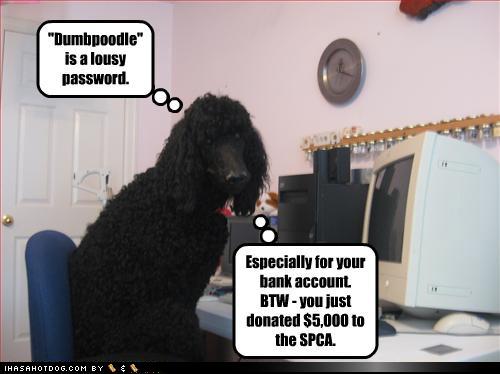First day on the job? Here’s some advice for success, from trainers who have been there.
 New trainers face daunting challenges. Whether your boss promotes you into a training position or you are hired from another organization, you want to get off to a strong start. In part, that means avoiding mistakes commonly made by new trainers.
New trainers face daunting challenges. Whether your boss promotes you into a training position or you are hired from another organization, you want to get off to a strong start. In part, that means avoiding mistakes commonly made by new trainers.
Although we often learn our best lessons when we stumble, some mistakes can seriously hurt your training program, damage your reputation, or even derail your career. Here are 10 tips to help you get your training career off on the right foot.
Complete a thorough needs assessment
Whether you use a formal interview process, a job-analysis approach, or you simply host informal talks with supervisors, needs assessment is critical to training success. “The biggest mistake I made as a new trainer and instructional designer was not taking enough time to understand my participants’ needs,” says Susan Michels-Ricker, a systems developer and project analyst at Federated Insurance Company.
Managers often will suggest a solution to the wrong problem. “We need training on X,” supervisors may say, when in fact the problem is Y. During your needs assessment, talk with a few of the people you’ll be training to see what they think of the proposed solution.
If you find that managers disagree with end users, you must diplomatically discuss how to reposition the training to fill the actual learning gap. With today’s tight budgets, you simply cannot afford to spend resources on the wrong problem.
Don’t answer every question
You may have gone from a role as a subject matter expert to a trainer. However, many of the employees you will train also have a reservoir of applicable experience and knowledge. When possible, draw from the participants’ combined knowledge instead of always answering questions.
Also, allow “dead space” or silence, which provides participants a chance to contribute. Keep in mind that many people feel uncomfortable speaking up in front of an entire classroom, so design small-group activities that allow learners to collaborate as they solve problems. Let your learners work and interact; otherwise, you will surely lose their interest.
Vary your training delivery methods
Games, simulations, social learning—there is an overwhelming number of ways to approach classroom training. It can be tempting to resort to the traditional PowerPoint-aided lecture. But be careful not to turn the lecture into an information dump. This presentation style rarely results in participants putting their learning into practice.
One way to increase interest in your presentation is to incorporate a case study. Ideally, this is a compelling story of how the training material is applied in a real-life scenario. You also can solicit examples from trainees that reinforce the concepts they’re learning.
Develop a tool to ensure managers reinforce learning
Studies show that the majority of learning takes place after the training event, when managers actively reinforce a course’s learning objectives. Since most managers won’t take the course themselves, offer them a management tool that outlines the learning objectives and lists action items under each of the course’s objectives.
For example, if you’re teaching a new technology to call-center employees, the management tool should be a checklist of the key principles and the action items associated with them that you taught the class to apply in their day-to-day work.
Slow down
Often we plug too much material into a presentation, forcing us to rush through it. “One of the most common mistakes I see with new trainers who are experts in the material is covering the material too quickly and expecting the class to keep up,” says Micah Bean, a training manager at Answer Financial. “I remember ‘bulldozing’ right through my material because it was so easy for me. I have since learned to slow down and read the room to ensure everyone is with me.”
Don’t pack too much information into a single training event. It overwhelms participants and they often walk away with no clear vision of how to implement what they learned.
Check the room and double-check your equipment
You’d be surprised how often trainers arrive too late. Show up early enough to ensure that you are comfortable with the room setup and that your equipment is working. Then, work the room—greeting trainees and building rapport with them.
Use humor appropriately
“Focus humor toward yourself, not toward your trainees,” recommends Steve Price, a performance consultant in Phoenix, Arizona. “It takes only one person feeling offended to get you an appointment with your human resources representative.”
Although we are flooded with off-color humor in our lives, we cannot afford to use humor in the workplace that might invite complaints. When using images and anecdotes in your presentation, steer away from photos and stories that can cause controversy.
Use images instead of text whenever you can
In the book Talk Like Ted, Carmine Gallo recaps the evidence that shows we remember images much more readily than words. Three days later, people remember only about 10 percent of what they hear, according to Gallo. Pictures increase recall to an amazing 65 percent, proving that we can greatly increase learning if we use fewer bullet points and more relevant images.
Take time to rehearse
We spend weeks, sometimes months, designing the perfect curriculum. Then we fail to practice it. Training professionals need to master the presentation. This enables us to stay on track after participants ask questions or sidetrack us.
“The most common mistake I see for beginning trainers … is that they don’t work hard enough preparing,” says Kevin Ring, founder of the Institute of Benefits and Wellness Professionals. “I’ve seen people spend weeks prepping a slide deck, but never once rehearse the actual presentation.”
If things go wrong, do immediate damage control when class ends
Sometimes training sessions stray off course, perhaps due to disruptive participants or some other issue. When this happens, face problems head-on before they come find you.
Go to your supervisor first so that he isn’t blindsided. If necessary, talk to both a trusted senior leader in your organization and your training peers. They can help you troubleshoot what went wrong and determine how to avoid that problem in the future.
Never underestimate the challenges of a new training position. These tips can help you make a smooth transition and continue to thrive in your new role.



 New trainers face daunting challenges. Whether your boss promotes you into a training position or you are hired from another organization, you want to get off to a strong start. In part, that means avoiding mistakes commonly made by new trainers.
New trainers face daunting challenges. Whether your boss promotes you into a training position or you are hired from another organization, you want to get off to a strong start. In part, that means avoiding mistakes commonly made by new trainers.